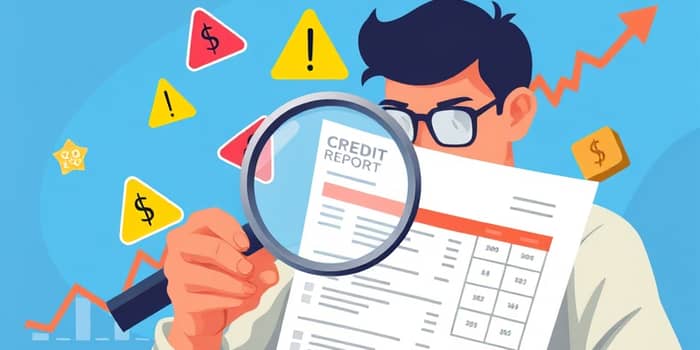Reading your credit report can be a transformative step in regaining control over your financial future. By inspecting each section carefully, you can identify potential fraud early and make informed decisions that safeguard your creditworthiness.
Understanding Your Credit Report
A credit report is a detailed record of your credit history, maintained by the major credit bureaus. It compiles personal details, account summaries, payment histories, inquiries, collections, and public records.
The three major credit bureaus—Experian, Equifax, and TransUnion—collect and report this information. Lenders and service providers use these reports to evaluate your financial reliability.
Key Sections and Potential Red Flags
Each section of your credit report holds clues about your financial health. Learning where red flags can appear empowers you to address issues proactively.
- Personal or Identifying Information: Check your name, address, Social Security number, and employment history for errors or unfamiliar entries.
- Account Summary: Review the overview of open and closed accounts, noting the average age of accounts and any negative marks.
- Credit Accounts: Scrutinize details on credit cards, loans, payment dates, balances, and credit limits for inaccuracies.
- Credit Inquiries: Differentiate between hard inquiries (loan or card applications) and soft inquiries. Too many can hurt your score.
- Collections and Public Records: Look for accounts sent to collections, charge-offs, bankruptcies, liens, or other court actions.
Common Red Flags and Their Implications
By being aware of these common warning signs, you can take action before they damage your financial standing.
- Incorrect personal details, such as misspelled names or wrong birth dates, may indicate identity theft or clerical errors.
- Unrecognized accounts or hard inquiries can signal that someone has opened accounts in your name or applied for credit without permission.
- Late or missed payments are the most damaging marks—they can remain on your report for seven years and late payments can severely impact your score.
- A high credit utilization ratio above 30% often suggests financial stress. Use the formula: (total balances) ÷ (total available credit) to calculate your percentage.
- Accounts sent to collections, even if paid, leave a mark and appear as charge-offs, greatly lowering your score.
- Public records like bankruptcies, liens, or judgments stay on file for up to a decade and represent serious red flags.
Identity Theft Indicators
Identity theft can remain hidden until you discover unfamiliar entries on your credit report. Common indicators include:
• Alerts or warnings from the credit bureaus regarding suspicious activity.
• Addresses or phone numbers that you never used.
• Social Security numbers that don’t match your records.
If you spot any of these, take immediate action to protect your identity and finances.
How to Dispute and Correct Errors
Errors on your credit report can have lasting consequences. Disputing inaccuracies promptly ensures your score reflects your true financial behavior.
- Obtain your free annual report from AnnualCreditReport.com or directly from each bureau.
- Gather supporting documents such as statements, payment confirmations, or identity proofs.
- Submit a dispute to the credit bureau online, by mail, or by phone, and dispute inaccurate information directly.
- Monitor the bureau’s response; they must investigate within 30 days and correct verified mistakes.
Summary of Red Flags and Recommended Actions
Best Practices for Ongoing Monitoring
Maintaining good credit is an ongoing process. By following these guidelines, you can maintain healthy credit for life and stay ahead of potential issues.
Review your credit report at least once a year, or more frequently if you suspect fraud. Enroll in credit monitoring services if possible, and set alerts for any changes to your report.
Limit new credit applications to only those you need. Each hard inquiry dents your score and can stay on record for two years. Keep balances low, pay on time, and consider keeping older accounts open to maintain a longer credit history.
By learning how to read your credit report and spot red flags, you empower yourself to take immediate action and protect your financial reputation. Regular monitoring, prompt dispute of errors, and proactive credit management are your keys to a stronger financial future.
References
- https://clarifycapital.com/blog/credit-report-red-flags
- https://www.experian.com/business/solutions/regulatory-compliance/red-flags-rule-compliance
- https://www.busfin.uillinois.edu/accounting_budgeting/financial_controls___security/identity_theft_prevention_program/examples_red_flags
- https://blog.renttrack.com/credit-report-red-flags
- https://www.transunion.com/article/what-to-look-for-in-your-credit-report
- https://www.experian.com/blogs/ask-experian/credit-education/faqs/how-to-dispute-credit-report-information/
- https://www.lendingclub.com/resource-center/personal-finance/how-to-read-your-credit-report-identify-red-flags
- https://www.ftc.gov/business-guidance/privacy-security/red-flags-rule










